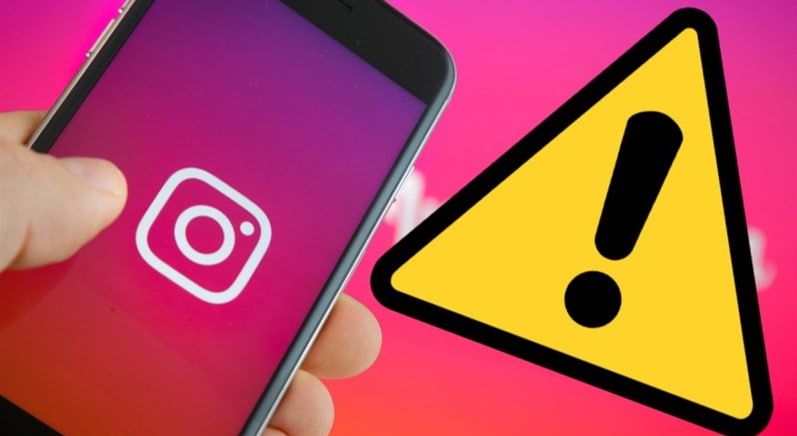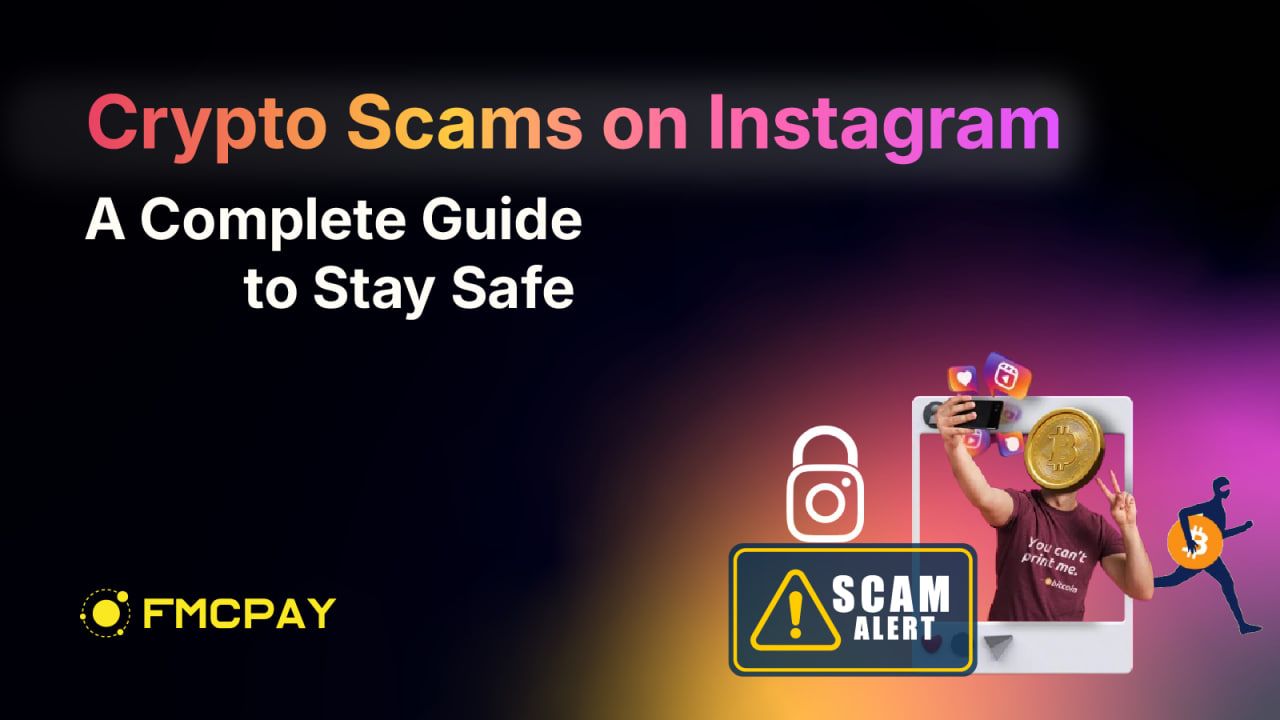As the popularity of cryptocurrency continues to grow, scammers have turned social media platforms into playgrounds for fraudulent schemes. Among them, crypto scams on Instagram are on the rise, as scammers take advantage of the platform’s reach and visual appeal to deceive users.
This guide will walk you through the reality of crypto scams on Instagram, explore common scam types, and provide insightful tips to keep your crypto assets secure.
1. The Danger of Crypto Scams on Instagram
With over a billion active users, Instagram is a hub for trends and communities, including the ever-growing world of cryptocurrency. Unfortunately, the popularity of digital assets has also attracted fraudsters, leading to an increase in crypto scams on Instagram.
Scammers exploit the platform’s reach and the trust users place in visually appealing posts, often posing as influencers, investors, or legitimate crypto companies to trick unsuspecting users.
According to a report from the U.S. Federal Trade Commission (FTC), crypto scams on Instagram have become alarmingly prevalent, with 32% of social media scam victims reporting that Instagram was the source of these exploits. Scammers use tactics designed to bypass Instagram’s filters and guidelines, making it challenging for users to identify these scams.

This concern over crypto scams on Instagram prompted several U.S. senators to issue a joint letter to Meta CEO Mark Zuckerberg, pressing for transparency on the company’s efforts to combat cryptocurrency scams across its platforms, including Facebook, Instagram, and WhatsApp.
Eventhough, scammers often use tactics designed to bypass Instagram’s filters and guidelines, making it challenging for users to identify crypto scams on Instagram. Awareness of these tactics is the first step to protecting your assets and avoiding financial losses.
2. A Real Example of Crypto Scams on Instagram
Let’s consider a real-life scenario to illustrate how crypto scams Instagram may operate:
A striking incident involving crypto scams on Instagram recently unfolded when cybercriminals hacked the official Instagram account of McDonald’s, resulting in the theft of a staggering $700,000 from unsuspecting followers. So how did they execute this elaborate scheme?
First, the hackers used the Instagram account of this globally recognized fast-food brand to promote a valueless cryptocurrency called “GRIMACE” to its 5.1 million followers.

At the same time, tweets from the Head of Social Media of McDonald’s, Guillaume Huin, appeared to reinforce the legitimacy of this cryptocurrency promotion. Huin encouraged followers to buy the coin, promising that GRIMACE holders would receive a follow from McDonald’s official Instagram account.

This coordinated social media strategy successfully allowed the hackers to inflate the coin’s price, creating a false sense of legitimacy and leading victims to believe they were investing in an official McDonald’s-backed project. According to reports, the GRIMACE coin’s market value surged from zero to $25 million in under 30 minutes, only to crash when the scammers withdrew their funds and vanished.
Adding insult to injury, the scammers left a final message on McDonald’s Instagram profile, bragging about having made off with $700,000 from their rug pull scam.

The next day, Guillaume Huin confirmed that his Twitter account had been compromised and that the messages had been posted by scammers:

McDonald’s also deleted the fraudulent posts on its Instagram account and announced that it is cooperating with authorities to investigate the security breach and identify those behind the hack. The company also apologized for the language used in what it described as an “isolated incident”:
“We are aware of an isolated incident that impacted our social media accounts earlier today. We have resolved the issue on those accounts and apologize to our fans for any offensive language posted during that time.”
Ultimately, this real example of crypto scams on Instagram underscores how scammers can exploit even the most reputable brands for their schemes. That’s why it is important to protect personal financial information and approach all online investments with skepticism.
3. Common Types of Crypto Scams on Instagram
Instagram’s popularity and trustworthiness as a platform make it a prime target for various crypto scams. Awareness of common crypto scams on Instagram can help protect users from falling victim to financial loss and identity theft.
These scams often exploit users’ desire for quick gains or exclusive investment opportunities, with fraudsters leveraging fake profiles, hacked accounts, and manipulative content to lure victims. Here are some of the most common types of crypto scams on Instagram:

3.1. Fake Investment Opportunities
One of the most widespread crypto scams on Instagram involves phony investment opportunities where scammers promise high returns with minimal risk. They often pose as experienced crypto investors or influencers, showcasing extravagant lifestyles and “proof” of earnings to convince followers. These scammers typically ask for an initial “investment” from the victim, only to disappear with the funds.
Key red flags:
- Promises of guaranteed high returns with minimal risk (a classic warning sign of fraud).
- Urgency or limited-time offers pressuring users to act quickly without verifying the opportunity.
- Requests for an initial “investment” or deposits in crypto; once received, the scammers disappear with the funds.
3.2. Rug Pull
Rug pulls are a newer type of scam where fraudsters promote a fake cryptocurrency, claiming it is associated with a reputable company or influencer. Victims are encouraged to buy into the coin early, with promises of massive returns. Once the scammers amass enough money, they cash out, causing the coin’s value to plummet and leaving investors with worthless tokens.
Key red flags:
- Associations with major brands or celebrities without official announcements from verified accounts.
- Unverified coins or tokens that are difficult to find on legitimate exchanges.
- Promises of massive returns for early buyers or exclusive access that seems too good to be true.
3.3. Impersonation of Influencers
Scammers often create fake accounts that imitate well-known figures in the crypto world or popular influencers, convincing users to invest in fake crypto opportunities.
These impersonators frequently post comments and direct messages claiming they’ve found a “new, exclusive investment opportunity,” drawing followers into the scam by leveraging the influencer’s reputation.
The McDonald’s case discussed earlier combines elements of both rug pull and impersonation scams, amplifying the appearance of credibility.
Key red flags:
- Minor spelling errors or slight variations in usernames that may indicate an impersonator.
- Unsolicited investment advice or DMs directly from influencers, which is uncommon for reputable figures.
- Posts or comments encouraging direct messages to discuss investment opportunities, as legitimate influencers rarely promote investments via personal messages.
3.4. Phishing Scams through Direct Messages
Phishings are prevalent crypto scams on Instagram, where scammers send direct messages containing suspicious links. These messages often appear to be from a trusted account and encourage the user to click on a link to claim a prize or join an exclusive group.
The link then leads to a fake website that collects the user’s login credentials or personal information, giving scammers access to their Instagram account and potentially their financial details.
Key red flags:
- Messages with vague or clickbait-style content, urging you to click a link without context.
- Links leading to sites with unusual URLs or sites that require login credentials or financial information.
- Promises of free rewards or prizes without any context from reputable sources or verified accounts.
3.5. Fake Giveaways and Airdrops
In fake giveaway and airdrop scams, fraudsters claim that users can receive free cryptocurrency or NFTs by participating in a “promotion” or “giveaway.” Victims are instructed to send a small amount of crypto as a “transaction fee” to qualify, or to provide personal information. Once they send money or share data, the scammers vanish without delivering anything.
Key red flags:
- Requests for “transaction fees” to receive free crypto, which legitimate giveaways rarely require.
- Accounts without verification marks claiming to offer free NFTs or crypto tokens.
- Lack of clear terms or conditions for participation, as genuine promotions usually offer detailed guidelines.
Read more: 9 Most Common Cryptocurrency Scams & How to Avoid Them
4. Protect Yourself from Crypto Scams on Instagram

Crypto scams on Instagram are increasingly sophisticated, making it essential for users to recognize red flags and verify the legitimacy of any investment or giveaway they encounter on the platform. Now that you understand the types of crypto scams on Instagram, let’s look at steps you can take to protect yourself:
Verify Profiles Carefully
Always verify the authenticity of profiles, especially when it comes to influencers or companies offering investment opportunities. Look for the verified checkmark or other signs of legitimacy, and cross-reference the account with official websites or known profiles.
Be Wary of Unrealistic Returns
If an offer seems too good to be true, it probably is. Scammers lure victims with promises of “guaranteed” returns or double-your-money schemes. Legitimate crypto investments carry risk, and no legitimate company will guarantee profits. Avoid offers that promise quick, high returns with minimal effort.
Avoid Clicking on Suspicious Links
Phishing is a common method in crypto scams on Instagram. Avoid clicking on unfamiliar links in bios, comments, or messages. Always check URLs carefully and navigate to official websites directly whenever possible.
Enable Two-Factor Authentication
Two-factor authentication (2FA) adds an extra layer of security to your Instagram account, making it harder for scammers to gain access. Enabling 2FA helps keep your account safe from unauthorized access, which can protect you from impersonation scams and phishing attempts.
Report and Block Suspicious Accounts
If you encounter an account you suspect is fraudulent, report it to Instagram. Blocking and reporting suspicious accounts helps to prevent these scams from spreading. Additionally, by reporting crypto scams on Instagram, you can contribute to protecting others investors in the community.
5. How to Report Instagram Cryptocurrency Scams?

Crypto scams on Instagram are becoming increasingly sophisticated, but reporting suspicious accounts, posts, and messages is a powerful way to help protect yourself and other users from fraud. Instagram offers several tools to report potential scams and other malicious content. Here’s a quick guide to reporting crypto scams on Instagram:
5.1. Reporting a Scam Account
Reporting fake or suspicious accounts is an effective way to reduce crypto scams on Instagram and ensure that fraudulent profiles are flagged for Instagram’s review. When you encounter a profile promoting crypto scams on Instagram:
- Go to the Account – Open the suspected profile on Instagram.
- Tap the Three Dots – In the upper-right corner of the profile, tap the three-dot menu icon.
- Select “Report” – Choose “Report” and then select “It’s posting content that shouldn’t be on Instagram.”
- Specify the Issue – Select “Scam or Fraud” to indicate that the profile is involved in suspicious or fraudulent activities.
5.2. Reporting a Suspicious Post
This helps Instagram recognize problematic content and ensures that the platform remains safer for all users. If you come across a specific post promoting crypto scams:
- Open the Post – Tap on the post you believe is part of a scam.
- Tap the Three Dots – In the upper-right corner of the post, tap the three-dot menu icon.
- Select “Report” – Choose “Report” and then follow the prompts to indicate that the content is related to scams or fraud.
- Provide Additional Details – If prompted, provide more information to help Instagram assess the situation.
5.3. Reporting Direct Messages (DMs)
Many crypto scams on Instagram are spread through direct messages. When you report the DM, Instagram will review the conversation, and they may take action against the account if the message violates their guidelines. Here’s how to report suspicious DMs:
- Open the Conversation – Go to the message thread where you received the suspicious message.
- Tap and Hold the Message – Hold down on the specific message you want to report.
- Select “Report” – Follow the prompts to indicate that the message is part of a scam or fraudulent activity.
Conclusion
The rise of crypto scams on Instagram serves as a reminder to stay vigilant in your online interactions, especially when it comes to investments. Prioritizing security, questioning unsolicited investment offers, and verifying sources are essential to protect yourself from crypto scams on Instagram.
To help investors stay informed about the latest in crypto security and investment news, FMCPAY offers valuable crypto insights and updates on emerging threats and trends in the digital currency market. By keeping up with these insights, investors can make better-informed decisions, learn effective strategies to avoid scams, and stay ahead of potential risks.

